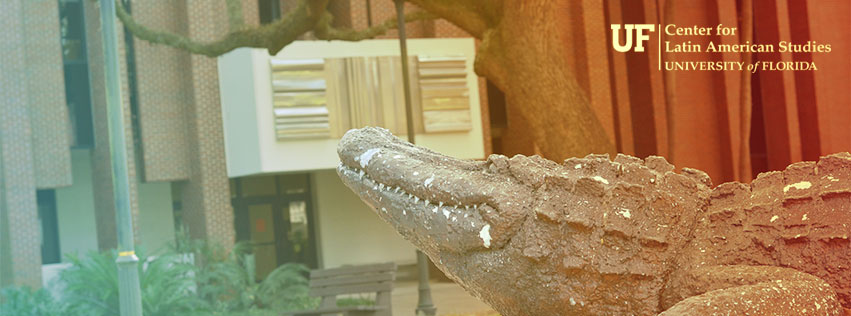 UF Center for Latin American Studies
UF Center for Latin American Studies
While the consequences of Amazonian deforestation have been studied for years, recent fires and political inaction have renewed concerns that the Amazon rainforest could reach its “tipping point” in the near future.

October 25, 2019 | Patricia Alba
Known for its incredible biodiversity, the Amazon is the world’s largest tropical rainforest and home to a large indigenous population. While the consequences of Amazonian deforestation have been studied for years, recent fires and political inaction have renewed concerns that the Amazon rainforest could reach its “tipping point” in the near future.
The ‘tipping point’ is a level of deforestation beyond which the rainforest disappears, with a fire-prone savanna taking its place. From an economic standpoint, such a catastrophic change would cause a domino effect, reducing rainfall and atmospheric moisture, thereby harming agriculture throughout South America, and perhaps even in the Mississippi Valley of the United States. Researchers put the tipping point at roughly 40%, although with global warming it could dip as low as 20-25%. This is alarming, given nearly 20% has already disappeared.
Research conducted by Dr. Robert Walker (University of Florida Center for Latin American Studies and Department of Geography), delineates new threats to the Amazon, and addresses how Amazonia’s indigenous peoples represent an important conservation force when defending their territories. Funding for the research was provided by the National Science Foundation and the University of Florida.
"This article brings to light a mounting threat to the Amazon in the form of a massive infrastructure program being advanced by all the South American nations called the Initiative for the Integration of the Regional Infrastructure of South America, or IIRSA,” said Dr. Robert Walker. “It demonstrates that if decisive action is not taken to slow the pace of development, the rainforest as we know it will disappear, doing irrevocable damage to global biodiversity, and harming the agricultural economy of South America." In the article, Dr. Walker uses a computer model and agricultural projections of the Food and Agricultural Organization (FAO) of the United Nations to show that by 2050, deforestation could reach 43% of the Brazilian portion of the Amazon basin. This is more than needed to spark an environmental catastrophe.
In the past, Brazil’s environmental policies have successfully reduced deforestation. However, in today’s political climate, indigenous defense of ancestral homelands is proving to be highly effective at forest conservation. Of special note is the Munduruku people who inhabit the Tapajós River Valley in Brazil, one of the Amazon River’s largest tributaries. The Munduruku recently managed to thwart development plans that would have transformed the Tapajos River into the “Mississippi” of Brazil, thereby conserving the ecology in a watershed covering 7% of the Amazon basin. This success, however, comes at a cost, namely the loss of job opportunities and economic growth.
The article concludes by arguing that the implementation of IIRSA is proceeding in the dark, and that the South American governments are ignoring its potential impact on the forest. Further research is needed to fully reveal all the ecological and economic consequences of a tipping point catastrophe for the South American nations and beyond. This requires a slow-down in the pace of project development in order to undertake a full assessment.
Avoiding Amazonian Catastrophes: Prospects for Conservation in the 21st Century is published in One Earth journal and can be read here: https://www.cell.com/one-earth/fulltext/S2590-3322(19)30081-8.
For more information contact Dr. Robert Walker at roberttwalker@ufl.edu.